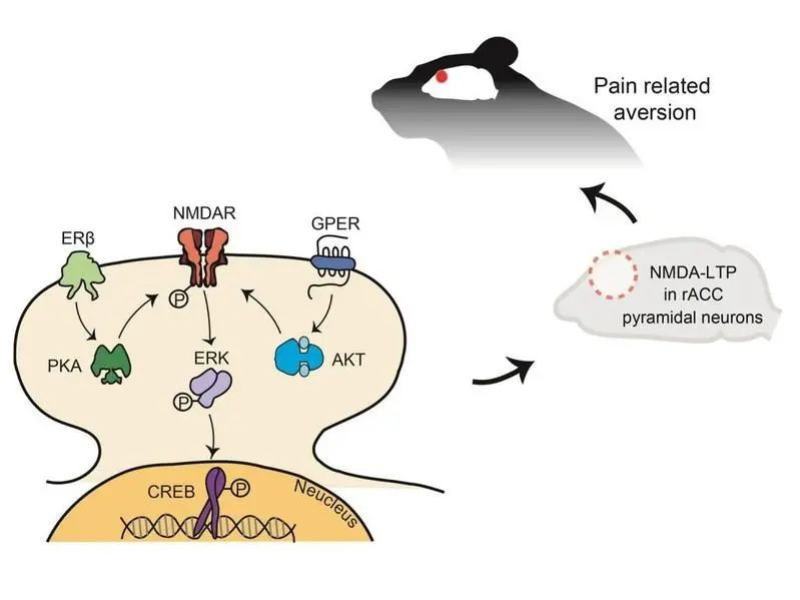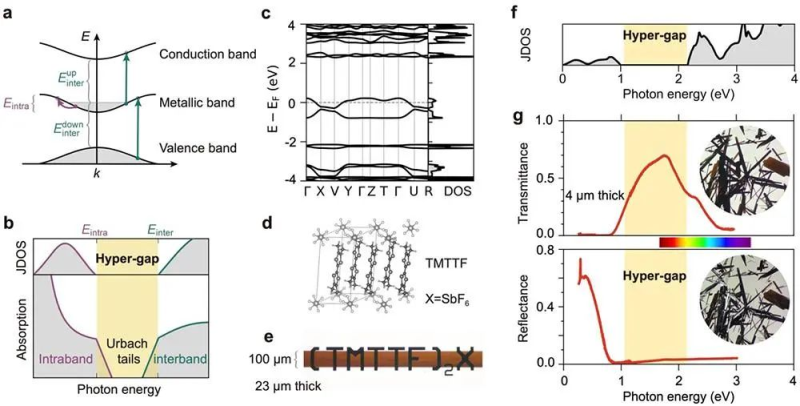Weekly Advanced Technologies〔78〕

Weekly Advanced Technologies〔78〕| Multifaceted Applications of Photoactive Molecular Switches in Interdisciplinary Research; Icebreaking Hydrogels: How Smart Materials Shield Industries from Emerging Threats
Molecular photoswitches demonstrate remarkable potential for diverse applications across biology, chemistry, and materials science, owing to their light-induced isomerization capabilities. Recently, LI Quan's team at Southeast University was invited to publish a long review paper on molecular photoswitches driven by visible and near-infrared light and their biological applications.
Professor HE Zhiyuan's research team at Beijing Institute of Technology has engineered an innovative icing forecast hydrogel (IFH) system integrating ice nucleation proteins with aggregation-induced emission (AIE) luminogens. The device enables accurate prediction of the timing of icing events through advance icing and color coding for effective anti-/de-icing measures, and has demonstrated unique application value in the wind power sector.
Based on the weekly diary of technology provided by the daily list of the NCSTI online service platform, we launch the column "Weekly Advanced Technologies" at the hotlist of sci-tech innovation. Today, let's check out No.78.
1. Advanced Functional Materials丨Multifaceted Applications of Photoactive Molecular Switches in Interdisciplinary Research

Molecular photoswitches have emerged as a promising class of functional materials with broad applications across interdisciplinary fields such as biology, chemistry, and materials science. Their unique capability to undergo reversible photoisomerization upon light irradiation enables precise control over molecular configurations at the nanoscale. This distinctive feature allows for spatiotemporally resolved manipulation of biological processes through targeted light illumination, offering unprecedented opportunities for non-invasive modulation of biological systems with exceptional precision. Consequently, molecular photoswitches represent an elegant and powerful toolkit for interrogating and engineering biological systems with light.
Recently, Professor LI Quan, Director of the Institute for Intelligent Materials, Chief Scientist, and faculty member at the School of Chemistry and Chemical Engineering, Southeast University, was invited to publish a comprehensive review article on visible- and near-infrared (NIR)-driven molecular photoswitches and their biological applications. In this work, Li Quan's team highlighted the most prevalent types of molecular photoswitches operated by visible and NIR light, including azobenzene, diarylethene, spiropyran, indigo, and donor-acceptor Stenhouse adducts (DASAs).
The review systematically discusses their isomerization mechanisms, current design strategies, and most notably, their biomedical applications, spanning bioimaging, sensing, drug delivery, photoregulated cancer therapy, and photopharmacology. Finally, the article outlines future opportunities and challenges for photoswitches in biological applications. This work addresses a cutting-edge interdisciplinary research field and is expected to advance the development of dynamic, stimuli-responsive materials in biomedicine.
2. Nature Communications丨Icebreaking Hydrogels: How Smart Materials Shield Industries from Emerging Threats

Design and functionality of bionic icing forecast devices
Professor HE Zhiyuan 's research team at Beijing Institute of Technology has engineered an innovative icing forecast hydrogel (IFH) system integrating ice nucleation proteins with aggregation-induced emission (AIE) luminogens. The device enables accurate prediction of the timing of icing events through advance icing and color coding for effective anti-/de-icing measures, and has demonstrated unique application value in the wind power sector.
Icing poses significant risks to wind power generation, grid infrastructure, and transportation systems, often leading to high energy waste, substantial economic losses, and serious safety hazards. Current anti-icing research focuses mainly on protective equipment and advanced materials, while studies on predictive icing mechanisms remain limited. Traditional icing prediction methods face three major challenges in accurately forecasting ice formation on solid surfaces: Stochastic ice nucleation makes early-stage crystallization difficult to model; The process depends on multiple interacting factors, including temperature, humidity, wind speed, and surface properties; Icing behavior varies widely across geographical, meteorological, and physical conditions, reducing the accuracy of conventional meteorological-data-driven models.
Inspired by the unique mechanism of cold-resistant organisms in nature, where ice-nucleating proteins (INPs) regulate extracellular crystallization, this study innovatively designed an ice-warning hydrogel device based on INPs to achieve early ice formation ahead of the ambient environment. By modulating the INP concentration, the device enables precise ice prediction across a broad temperature range (−6 to −28°C) and provides visual warnings using the distinctive properties of aggregation-induced emission (AIE) molecules. This allows for timely activation of de-icing measures, resulting in a net increase of approximately 1,898 kWh in wind turbine power generation within 2 hours.
The research team has developed an IFH device that combines biomimetic design and material innovation, breaking through the limitation of traditional post-icing detection to achieve precise prediction and visual monitoring of icing events--shifting from passive response to active prevention. The introduction of a color-coding system has enabled the differentiation of icing risks by severity, providing a reliable time window for proactive de-icing. The hydrogel-based icing warning device features compact size, rapid response, and resilience in harsh environments, demonstrating reliable early-warning performance and long-term stability under real-world conditions such as freezing rain and extreme cold. Its successful application in wind power generation has validated its practical value.
This technology holds promise for expansion into multiple anti-icing scenarios, including power grids and transportation systems, offering a novel solution to ice-related hazards. It also paves the way for smart materials in disaster early-warning applications.
3. ANESTHESIOLOGY丨Researchers Decipher the Neurochemical Basis of Pain's Emotional Dimension

Pain is a complex sensory and emotional experience involving both physiological (e.g., nociception) and psychological (e.g., affect and social cognition) processes. Chronic pain often accompanies severe negative emotions--such as disgust, fear, depression, and anhedonia--which can be more debilitating than the pain itself. However, research on pain's emotional aspects has lagged far behind studies of its sensory mechanisms.
To address this, Prof. ZHANG Yuqiu's team from the State Key Laboratory of Medical Neurobiology at Fudan University collaborated with Prof. XIAO Xiao's group at the Institute of Science and Technology for Brain-Inspired Intelligence, Fudan University. Prior research by Prof. ZHANG's team demonstrated that brain-derived estrogens are both sufficient and necessary for generating pain-induced aversion in both female and male animals. The collaborative study further revealed that three estrogen receptors--classical ERα and ERβ, along with G protein-coupled GPER--localized in the rostral anterior cingulate cortex (rACC) of rodents, play distinct roles in mediating pain-related affective aversion.
Selective knockdown of ERβ (but not ERα) in rACC excitatory pyramidal neurons completely blocks pain-induced aversion, while activating ERβ or GPER in the rACC directly triggers pain-related negative affect. Mechanistically, ERβ and GPER regulate the expression and synaptic plasticity of NMDA receptor subunits (GluN1/GluN2B) via PKA and AKT phosphorylation, respectively, driving aversion. This study offers novel insights into pain mechanisms and chronic pain therapy.
4. Nature Materials丨The Birth of Transparent Metals: Hyper-Gap Opens a Conductive Window

Theoretical principles, material predictions, and experimental discoveries of hyper-gap transparent conductors
Theoretical principles, material predictions, and experimental discoveries of hyper-gap transparent conductors
Transparent conductors are materials that combine electrical conductivity with optical transparency, making them indispensable components in modern optoelectronic devices like touchscreens, solar cells, LEDs, and smart windows. Currently, most transparent conductors are created by doping transparent semiconductors or insulators, a process that inevitably compromises some transparency to achieve electrical conductivity, resulting in an inherent trade-off between these two key properties.
Twenty years ago in 2005, researchers proposed a groundbreaking alternative - the concept of intrinsic transparent conductors that wouldn't require doping. These hypothetical materials would achieve perfect transparency through carefully engineered metallic band structures while maintaining excellent conductivity. However, despite two decades of research, no such material has been successfully realized in practice, representing a significant unsolved challenge in materials science.
Recently, under the guidance of Researcher LU Ling at the Key Laboratory for Optical Physics (Institute of Physics, Chinese Academy of Sciences / Beijing National Laboratory for Condensed Matter Physics), Ph.D. candidate WU Zhengran and colleagues experimentally discovered an intrinsic transparent metal in a class of organic charge-transfer salts. They coined the term "hyper-gap" to describe this novel transparent spectral band.
The hyper-gap in metals represents a non-absorbing spectral window situated between intraband and interband absorption regimes. This phenomenon aligns with the fundamental principle that conventional insulators exhibit no optical absorption within their band gaps. To realize this unique electronic structure, two stringent conditions must be met: band isolation (Metal bands must be sufficiently decoupled to prevent overlap) and energy constraints (The metal bandwidth must be smaller than the energy difference between the Fermi level and other occupied/unoccupied states). These requirements ensure that intraband absorption is truncated before reaching the onset energy of interband transitions, thereby creating the hyper-gap. Notably, this truncation energy must remain below the interband absorption threshold to maintain the transparency window.
In the quest to identify such materials, Dr. HU Xiaolei of the research team conducted a high-throughput computational screening of the entire inorganic materials database. However, practical realization proved challenging—despite theoretical candidates, most materials failed experimental validation due to insufficient conductivity.
Even though it was difficult, the team didn't give up. They discovered through calculations that a class of known organic conductors, TMTTF2X, could meet the hyper-gap criteria. They grew samples via electrochemical crystallization, and bulk single crystals exhibited a pronounced transparent window in the predicted hyper-gap range--spanning visible red to near-infrared--even at 30 μm thickness. The material demonstrated remarkably low optical loss (~0.01), the lowest among stoichiometric metals and on par with commercial ITO films, while outperforming ITO in both dispersion and reflectance. This work marks the first experimental integration of electronic conductivity and optical transparency in an intrinsic solid material, pioneering a hyper-gap driven pathway for transparent conductors.